Abstract
The number of online websites providing health-related information to the general public increases daily. Yet, it is relatively unknown as to how individuals in the general population access information with respect to their own medical status. In this study, clickstream data from an online health information website is analyzed with respect to the user's health insurance claims. The relationships are assessed through the construction and study of intersecting sets of ICD-9 codes in visited web pages and claims made. Results demonstrate that approximately 15% of patients use health information on the web in exact agreement with their medical status. In addition, almost 40 codes were found to be indicative of temporal aspects in user behavior with respect to physician visits.
Full text
PDF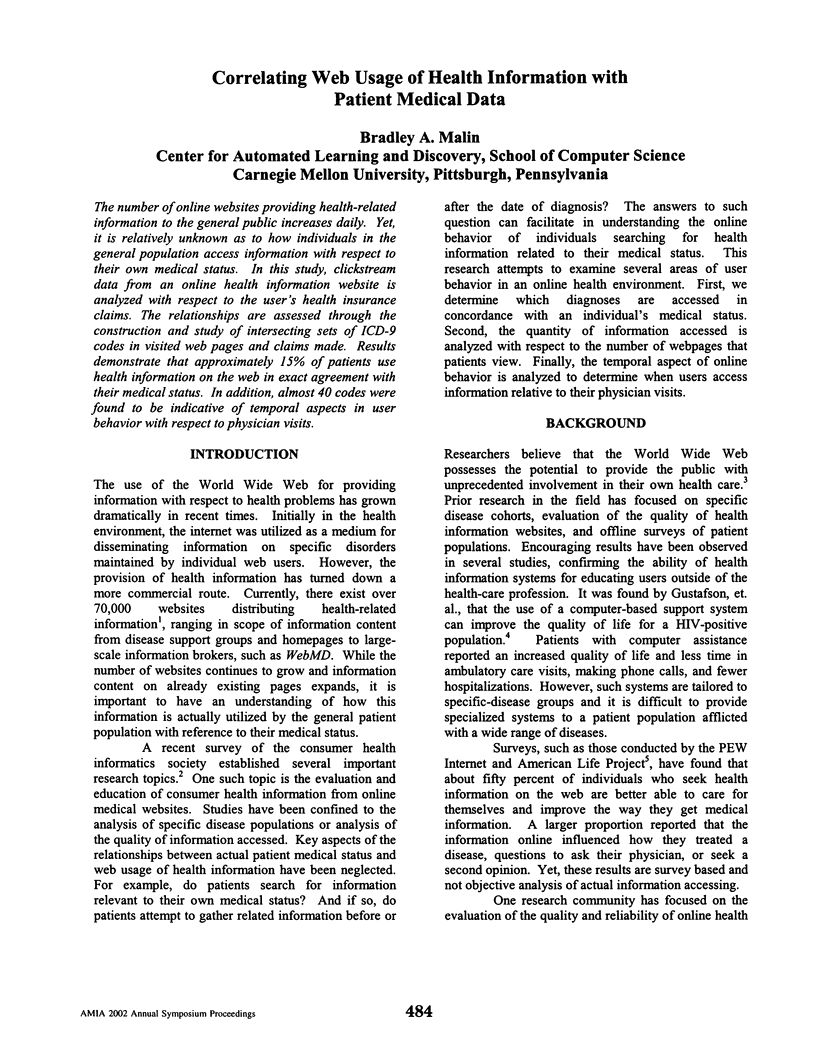
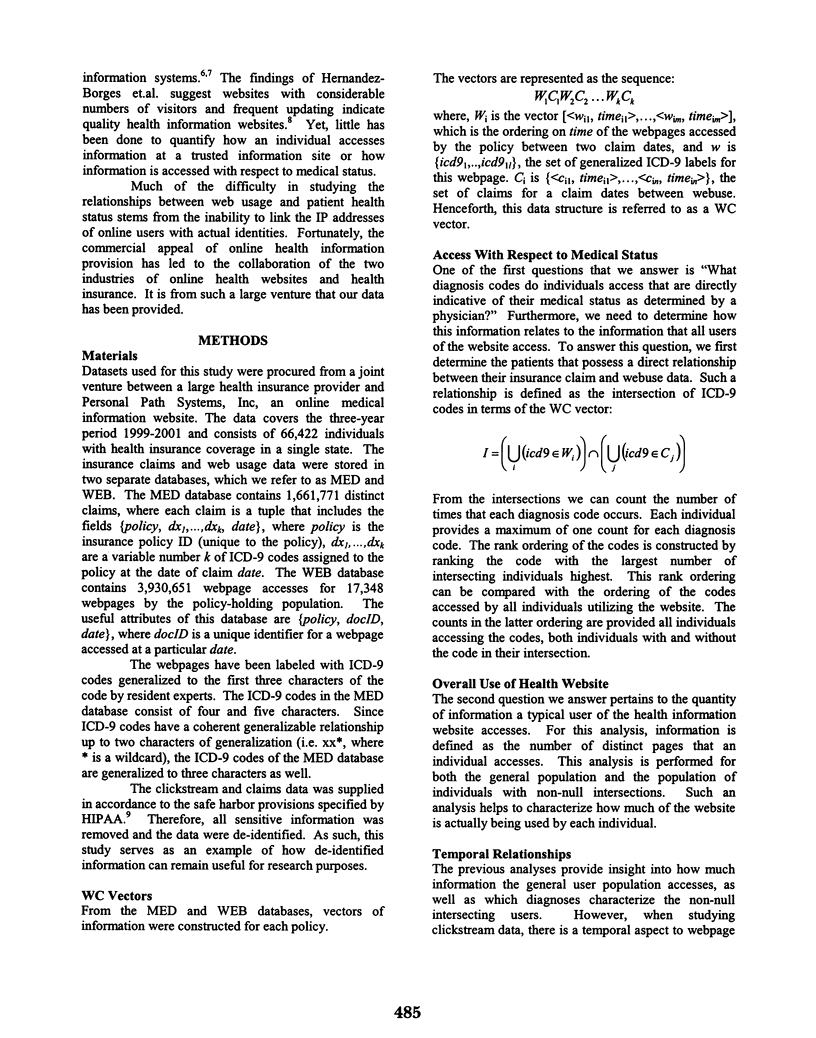
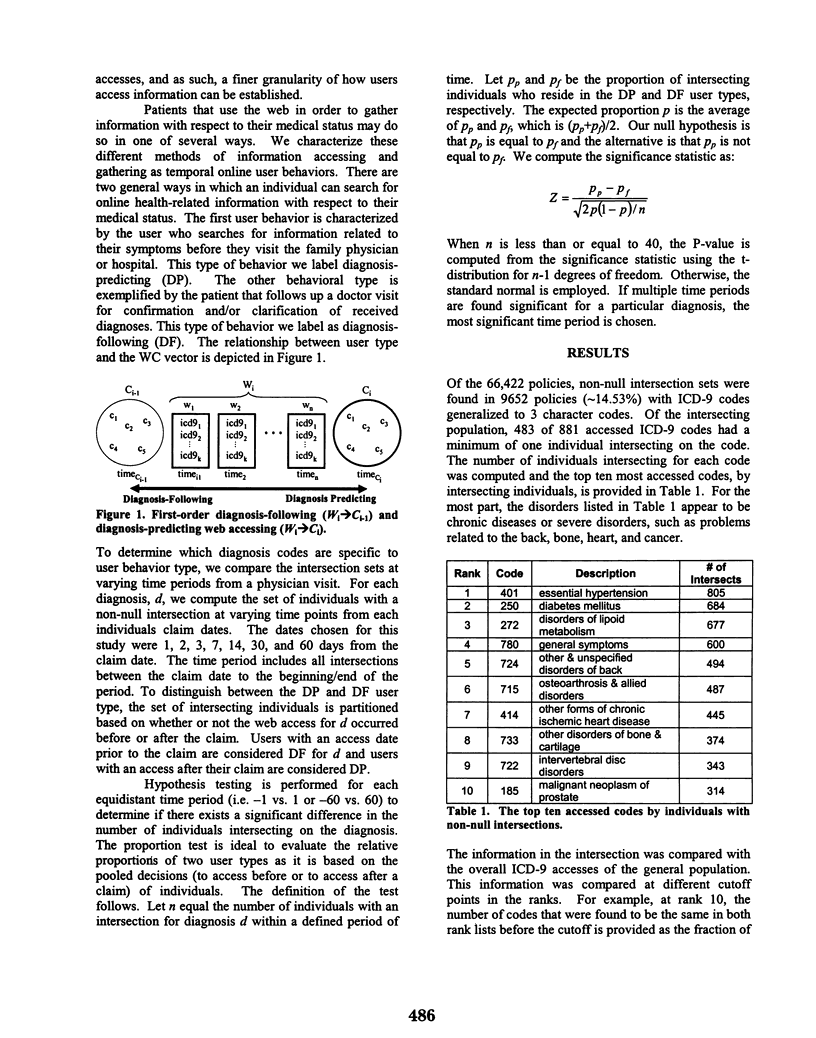
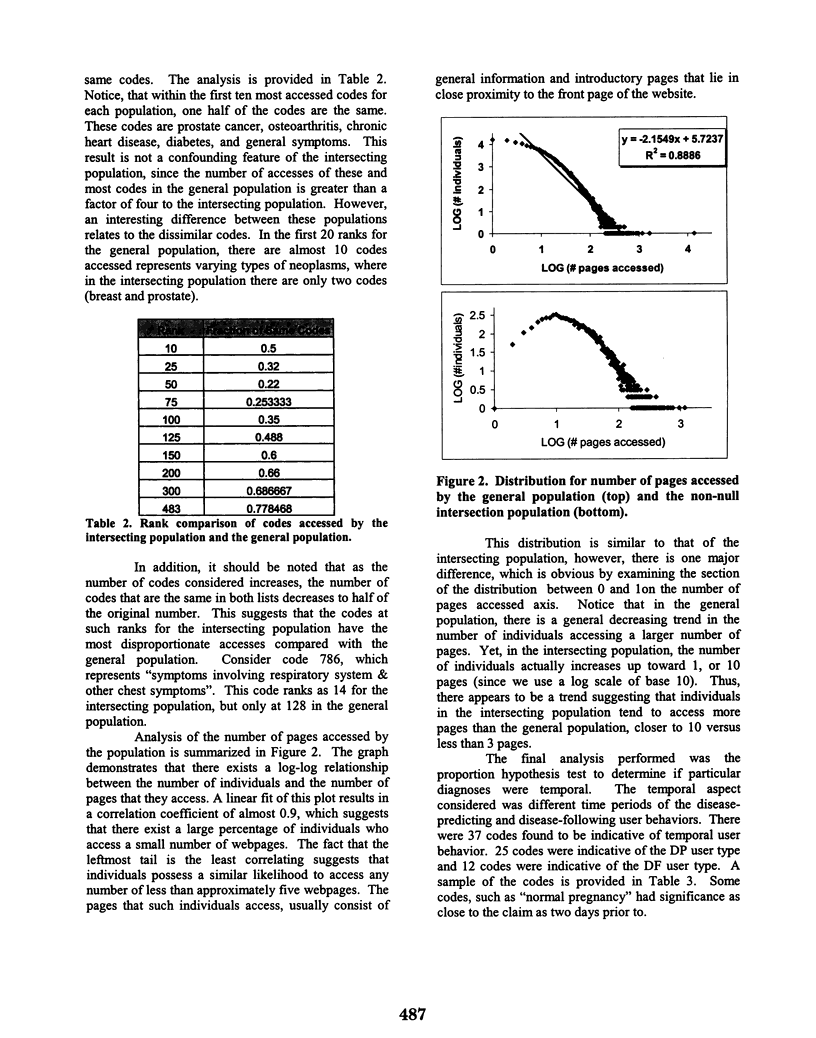
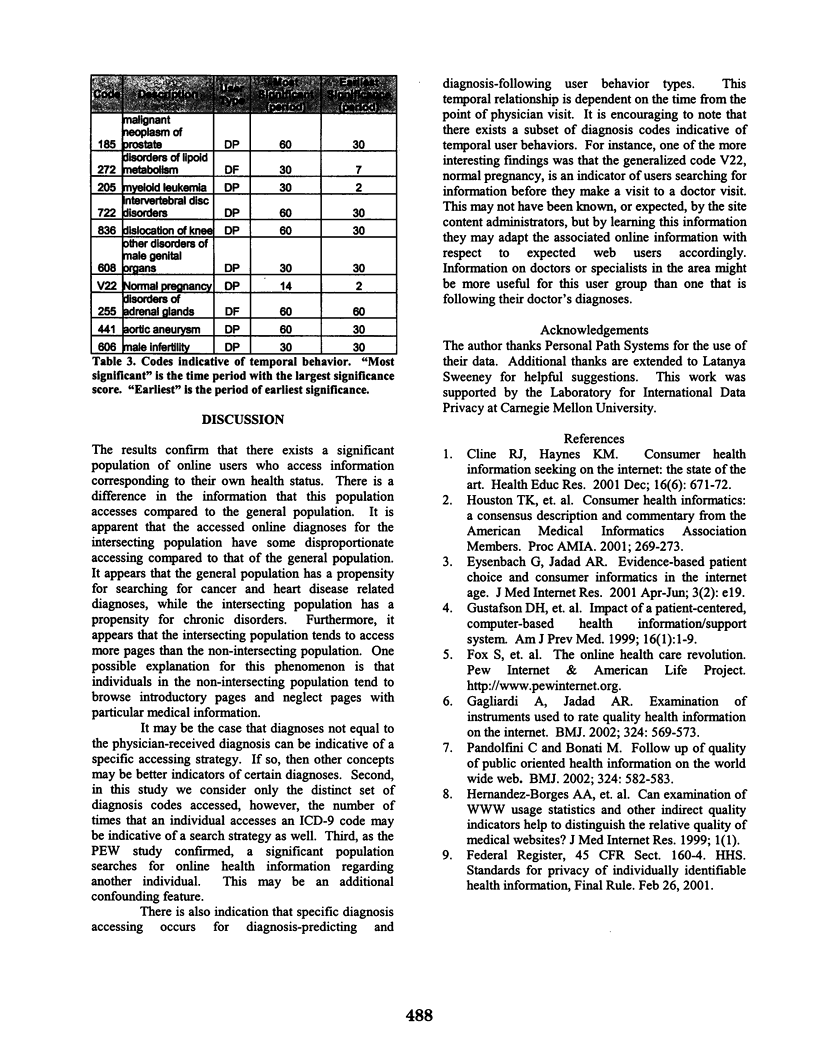
Selected References
These references are in PubMed. This may not be the complete list of references from this article.
- Cline R. J., Haynes K. M. Consumer health information seeking on the Internet: the state of the art. Health Educ Res. 2001 Dec;16(6):671–692. doi: 10.1093/her/16.6.671. [DOI] [PubMed] [Google Scholar]
- Gagliardi Anna, Jadad Alejandro R. Examination of instruments used to rate quality of health information on the internet: chronicle of a voyage with an unclear destination. BMJ. 2002 Mar 9;324(7337):569–573. doi: 10.1136/bmj.324.7337.569. [DOI] [PMC free article] [PubMed] [Google Scholar]
- Houston T. K., Chang B. L., Brown S., Kukafka R. Consumer health informatics: a consensus description and commentary from American Medical Informatics Association members. Proc AMIA Symp. 2001:269–273. [PMC free article] [PubMed] [Google Scholar]
- Pandolfini Chiara, Bonati Maurizio. Follow up of quality of public oriented health information on the world wide web: systematic re-evaluation. BMJ. 2002 Mar 9;324(7337):582–583. doi: 10.1136/bmj.324.7337.582. [DOI] [PMC free article] [PubMed] [Google Scholar]


